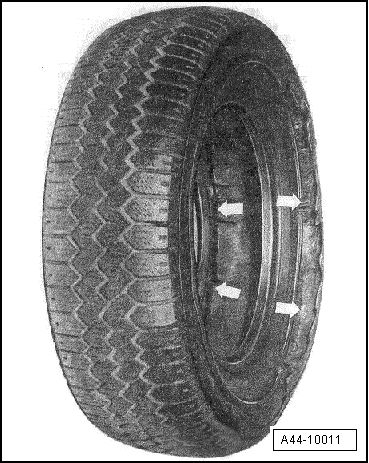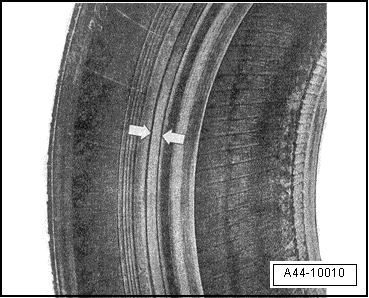| The tyre shown here was sporadically driven with an inflation pressure which was insufficient for the load. A typical indication for this is the scuffing all round the bead caused by the wheel flange and also the discolouration. Small, furrowed creases are visible along the inside of the sidewall. |
| When the tyre rolls, strong shear forces develop between the steel belt layers, especially at the ends of the belts. |
|
|

|



